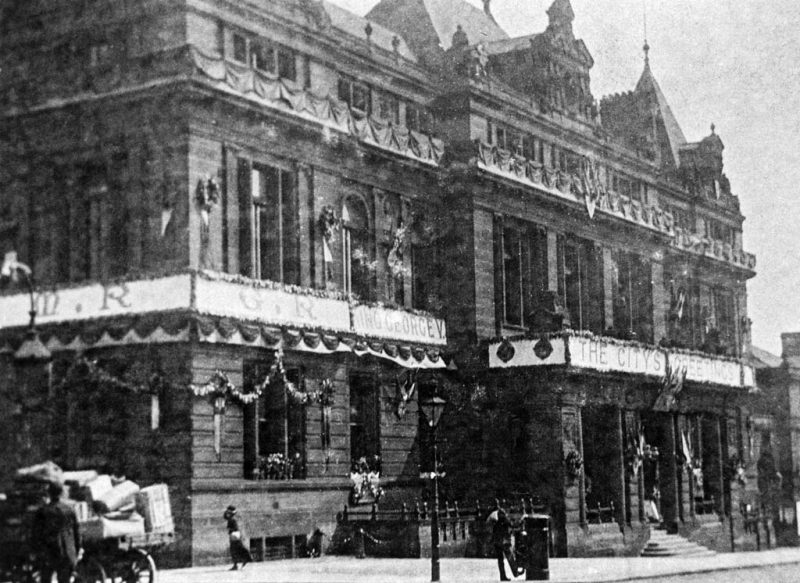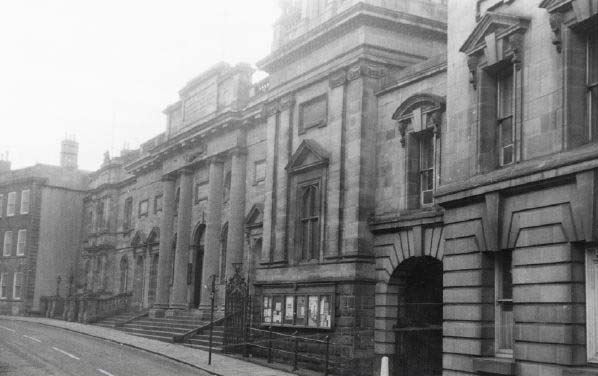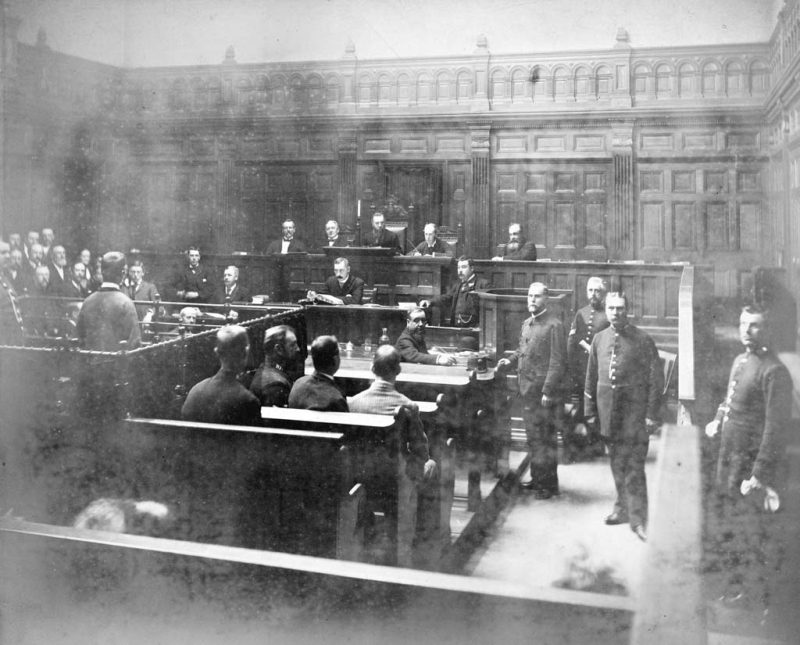Nottingham Elites and Civil Society 1900-1950
Status, Engagement & Lifestyle

Magistrates
Otherwise known as Justices of the Peace, the office of magistrate dates back to the 14th century. Aside from that of residency, the practical qualifications for appointment were always vague: that they should be men ‘of the best reputation and the most worthy men in the county.’ In English and Welsh counties appointment was through nomination to the Lord Chancellor by the Lord Lieutenant. Increasingly, in the late nineteenth and early twentieth centuries, this process came under robust attack. On too many occasions, it was argued, Lord Lieutenants nepotistically drew from their own political, and primarily Conservative, social circles.
Shire Hall High Pavement (courtesy M G Payne)
The position in municipal boroughs was slightly different. Firstly, there was no property qualification attached, for until 1906 when it was abolished, county nominees had to hold for some time lands or property after costs valued at five pounds p.a. or above, or hold leases generating rents in excess of fifteen pounds p.a.. In the municipalities this was never the case. You simply had to live or have a business in the municipality. Nor did the Lord Lieutenant hold authority over nomination. Instead the Lord Chancellor received these directly from councils, Members of Parliament, political agents and their associations, or from non-political organisations such as trade unions, and later, after 1919 with the passing of the Sex Disqualification Removal Act, from women’s groups. Following recommendations made by the Royal Commission on the Selection of Justice of the Peace, 1910, however, it became increasingly commonplace for the Lord Chancellor to set up advisory committee in both counties and boroughs. Their job was, using local knowledge, to place before him nominations. These small committees were ‘overwhelming political’ in composition. The membership of these committees a matter of public record, allegedly to prevent canvassing. As a consequence, many organisations and individuals were side-lined, unaware that they could forward names for consideration. The system, it was thought, still placed ‘undue reliance on the personal knowledge of members of advisory committees.’

Shire Hall High Pavement (courtesy Bernard Beilby)

Magistrates's Court Shire Hall
(courtesy of Nottinghamshire County Council)
It was uncommon for recipients to consider an appoint to be the reward for years of devoted political service. Some thought it akin to a ‘poor man’s knighthood’, a ‘mark of distinction carrying no obligations of an onerous nature.’ In the counties particular, non-attendance was endemic, with more than half of male magistrates either not attending at all, or sitting less than once a month. This was less true of the cities, where anyway courts sat more regularly. Nonetheless, a third were still irregular or non-attenders. In Nottingham, the numbers of ‘active’ magistrate varied considerably. Those no longer sitting because of age, infirmity, location or disinterest – and labelled ‘non-active’ – nevertheless kept their rank. Whilst, to a degree, the city’s bench did change its representational social composition through time, in practice lower class representation remained disproportionality small. It was, perhaps not surprisingly, and despite their much smaller numeric presence in the city, the upper and solid middle classes representing the higher professions and business that continued to dominate.
References and Further Reading
Bentley, D (1998), English Criminal Justice in the 19th Century (Continnuum: London)Logan, A, (2007), ‘In Search of Equal Citizenship: the campaign for women magistrates in England and Wales, 1910-1939’, Women’s History Review 16, 501-18.
(1910), Royal Commission on the Selection of Justices of the Peace Cd. 5250 (HMSO: London).
(1948), Royal Commission on Justices of the Peace 1946-48 Cmd. 7463 (HMSO: London).
Skyrme, T (1991), History of the Justices of the Peace (Barry Rose: Chichester).
Trainor, R (1998), ‘The “decline” of British urban governance since 1850: a reassessment’, in R J. Morris and R. Trainor (eds.), Urban Governance: Britain and Beyond Since 1750 (Aldershot: Ashgate), 28-46.
(1911) The Administration of Justice in Criminal Matters (in England and Wales) (Cambridge University Press: Cambridge).
